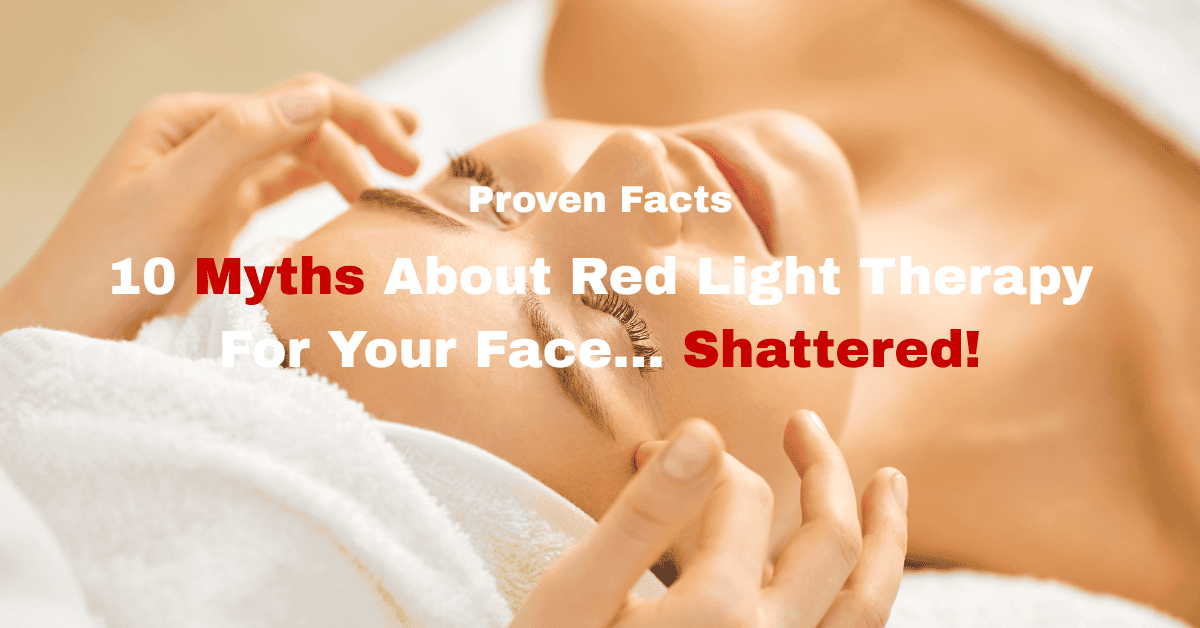Red light therapy is attracting attention for its promise to improve facial skin health, but persistent myths can make it hard to separate fact from fiction.
Whether you’re curious about reducing wrinkles, calming redness, or brightening your complexion, understanding the truth behind these common misconceptions will help you make confident, informed choices about your skincare routine.
Key Takeaways
- Discover why red light therapy is safe and evidence-based when used correctly.
- Learn how red light therapy differs from tanning beds and UV treatments.
- Understand that consistent use-not instant results-is key to visible skin improvements.
- Recognize the importance of device quality and correct usage for optimal results.
- Bust common myths to confidently start or refine your red light therapy routine.
Myth 1: Red Light Therapy Is Just a Passing Fad
Red light therapy is far from a fleeting trend. NASA began researching it in the 1980s to help astronauts heal wounds in space, and today, dermatologists and medical professionals use it for skin rejuvenation, acne, and wound healing.
The FDA has cleared several red light therapy devices for skin-related uses, including wrinkle and acne treatment. This therapy is backed by decades of clinical studies and real-world results from both clinics and at-home users.
Myth 2: All Light Therapies Are the Same
Not all light-based treatments are created equal. Red light therapy uses specific wavelengths-typically in the 630–680 nm (red) and 800–850 nm (near-infrared) range-that penetrate deeper into the skin than blue or green light. This enables red light to stimulate collagen production and cell repair, while other light therapies may only address surface-level issues. Leading dermatologists emphasize that the benefits of red light therapy are unique to these wavelengths.
Myth 3: Red Light Therapy Burns or Damages Skin
Red light therapy does not use ultraviolet (UV) light, which is responsible for sunburns and skin damage. Instead, it uses visible red and near-infrared light, which feels warm but does not burn or damage the skin. According to the American Academy of Dermatology, when used as directed, red light therapy is safe, non-invasive, and does not harm skin cells.
Myth 4: Red Light Therapy Is the Same as a Tanning Bed
Tanning beds emit UV light to darken the skin, which increases the risk of premature aging and skin cancer. Red light therapy devices use safe, non-UV wavelengths that do not tan or damage the skin. While some red light panels may resemble tanning beds, the technology and health effects are completely different. Experts at the Skin Cancer Foundation confirm that red light therapy does not increase skin cancer risk.
Myth 5: You’ll See Results After Just One Session
While some users report a healthy glow after their first session, most benefits-like smoother skin or reduced wrinkles-require regular use over several weeks. Red light therapy works at the cellular level, stimulating collagen and supporting skin repair. Consistency is key, and most people notice visible improvements after 4–12 weeks of steady use, according to dermatology clinics and device manufacturers.
Myth 6: At-Home Devices Aren’t Effective
Many at-home red light therapy for the face devices use the same technology as professional models, provided they deliver the correct wavelengths and intensity. The key is to choose a reputable brand and follow usage guidelines. According to the Journal of Clinical and Aesthetic Dermatology, high-quality at-home devices can deliver results comparable to in-office treatments when used consistently and correctly.
Myth 7: Red Light Therapy Only Helps With Acne
Red light therapy is versatile. In addition to treating acne, it is clinically shown to reduce fine lines, wrinkles, redness, and hyperpigmentation. It also promotes faster healing after cosmetic procedures and can soothe sensitive skin. The American Academy of Dermatology and multiple clinical studies highlight its broad range of skin benefits.
Myth 8: Red Light Therapy Is Dangerous for Your Eyes
Red light therapy is generally safe for the eyes when used as directed, but you should avoid staring directly into the light. Most devices include safety goggles, and following manufacturer instructions will protect your eyes from discomfort. The light is bright but does not contain UV rays, so it does not cause the same risks as sun exposure or tanning beds.
Myth 9: Longer Sessions Mean Faster Results
More is not always better. Most experts recommend sessions of 10–20 minutes, 3–5 times per week. Overuse does not speed up results and may cause mild skin irritation. Consistency and proper technique matter more than session length. Dermatologists advise following the device’s instructions for optimal safety and effectiveness.
Myth 10: Red Light Therapy Works Through Clothing
Red and near-infrared light must reach your bare skin to be effective. Clothing blocks these wavelengths, so always use your device on clean, uncovered skin for the best results. Device manufacturers and clinical guidelines agree that direct exposure is essential for benefits.
Conclusion
Red light therapy is a safe, well-researched, and versatile tool for improving skin health when used correctly. By debunking these common myths, you can approach your skincare routine with realistic expectations and confidence.
Remember, the best results come from choosing a quality device, following recommended guidelines, and staying consistent with your routine. If you’re ready to learn more or want step-by-step guidance, explore our complete beginner’s guide to red light therapy for the face and discover how this innovative treatment can help you achieve your skin goals.
Ready to take the next step? Dive deeper into the science, safety, and best practices for red light therapy in our related guides, and start building a routine that works for you. Your journey to healthier, more radiant skin starts with the facts.

Leave a Reply